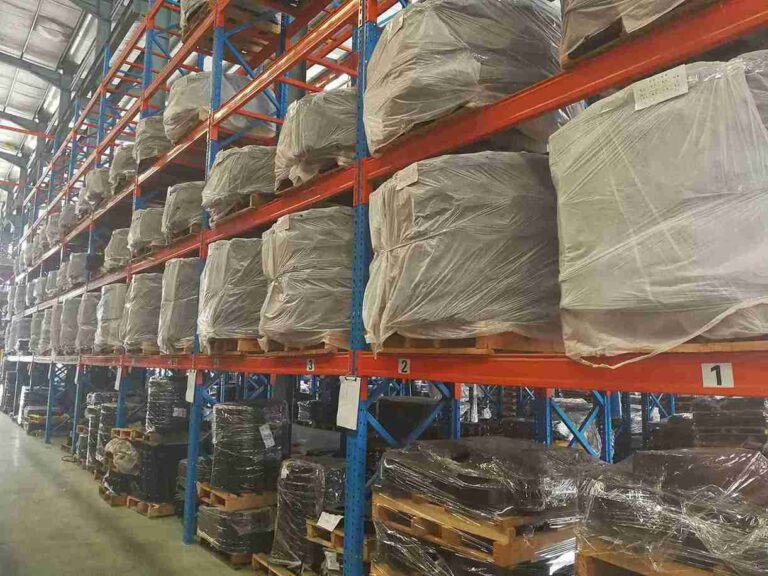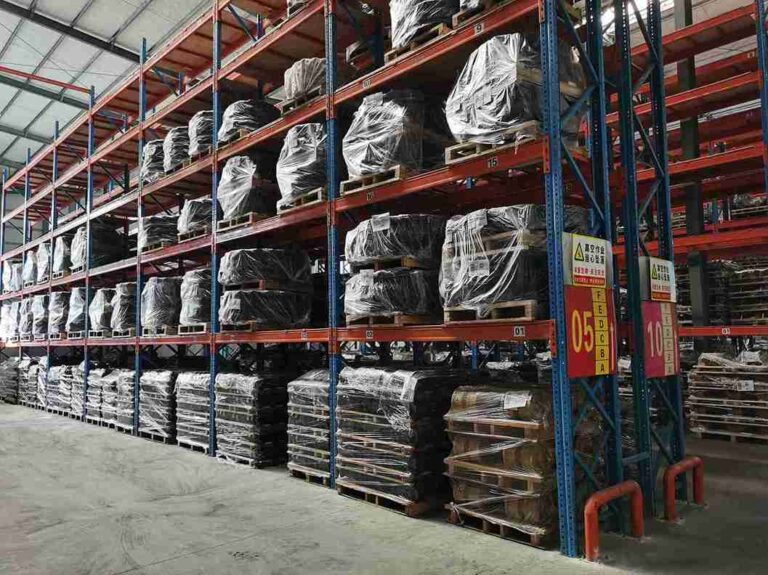📐 "First 50 Enterprise Queries Get Custom 3D Warehouse Design" Plan

Introduction: The Critical Need for Beam Racking Damage Prevention
In warehouses and distribution centers, beam racking damage prevention is not just a best practice—it’s a necessity. Damaged racking systems lead to safety hazards, costly repairs, and operational disruptions, making proactive maintenance essential.
This in-depth guide explores beam racking damage prevention strategies, from proper loading techniques to impact protection solutions. Warehouse managers, safety officers, and logistics professionals will gain actionable insights to extend racking lifespan, minimize risks, and optimize storage efficiency.
1.

Understanding Beam Racking Systems and Their Weak Points
1.1 What Makes Beam Racking Vulnerable to Damage?
Beam racking systems, while durable, are prone to structural stress, forklift impacts, and overloading. Without effective beam racking damage prevention, even minor damage can escalate into catastrophic failures.
1.2 The Most Common Causes of Beam Racking Damage
- Forklift collisions (responsible for over 60% of racking failures)
- Exceeding weight limits (leading to beam deflection and collapse)
- Poor installation or misaligned components
- Lack of routine inspections (allowing minor issues to worsen)
- Environmental factors (rust, seismic activity, temperature fluctuations)
Understanding these risks is the first step in beam racking damage prevention.
2. Best Practices for Beam Racking Damage Prevention
2.1 Proper Loading Techniques to Prevent Overloading
Beam racking damage prevention starts with correct load distribution:
- Never exceed manufacturer-specified weight limits
- Balance loads evenly across beams to prevent stress points
- Use pallets that fit properly (avoid overhanging edges)
2.2 Forklift Impact Protection: A Key Pillar of Beam Racking Damage Prevention
Since forklifts are the #1 cause of racking damage, warehouses must implement:
- Steel column guards (absorb impacts and prevent beam deformation)
- Aisle speed limits (reducing collision risks)
- Forklift operator training (certification programs minimize accidents)
2.3 The Role of Regular Inspections in Beam Racking Damage Prevention
A structured inspection routine is crucial:
- Daily visual checks by warehouse staff (look for dents, bends, or loose bolts)
- Professional inspections every 6 months (identify hidden structural issues)
- Immediate repairs for any damage (delays increase failure risks)
3. Reinforcing Beam Racking for Long-Term Damage Prevention
3.1 Upgrading to Heavy-Duty Components
For high-capacity storage, consider:
- Thicker steel beams (higher resistance to bending)
- Bolted connections instead of clip-in beams (greater stability)
3.2 Additional Safety Features for Enhanced Beam Racking Damage Prevention
- Wire mesh decking (prevents pallets from falling)
- Rack end protectors (shield uprights from forklift impacts)
- Seismic reinforcement kits (essential in earthquake zones)
4. Recognizing Early Warning Signs of Beam Racking Damage
4.1 Visible Indicators of Racking Wear and Tear
- Bent or twisted beams (a clear sign of overloading or impact)
- Cracks in welds or uprights (indicates structural weakness)
- Loose or missing bolts (compromises system integrity)
4.2 When to Repair vs. Replace Damaged Components
- Minor dents can often be straightened
- Severely bent beams must be replaced immediately
- Damaged uprights typically require full replacement
5. Employee Training: A Critical Factor in Beam Racking Damage Prevention
5.1 Forklift Operator Certification Programs
- Hands-on training for safe maneuvering in narrow aisles
- Collision avoidance techniques (reducing racking impacts)
5.2 Warehouse Safety Protocols for Staff
- Clear labeling of load capacities on each beam level
- Strict enforcement of no modifications (unauthorized changes weaken the system)
6. Selecting the Right Beam Racking System for Damage Prevention
6.1 Selective vs. Drive-In Racking: Which Is More Damage-Resistant?
- Selective racking allows easy access but is more exposed to forklift damage
- Drive-in racking reduces aisle collisions but requires precise loading
6.2 Custom Solutions for High-Risk Environments
- Cold storage racking with anti-corrosion coatings
- Automated storage systems (minimizing human error)
7. The Financial and Operational Impact of Poor Beam Racking Damage Prevention
7.1 The True Cost of Neglecting Racking Maintenance
- Single beam replacement: 500
- Full racking collapse: $10,000+ in damages and downtime
7.2 Insurance and Compliance Risks
- Damaged racking voids warranties
- OSHA fines for unsafe warehouse conditions
8. Real-World Case Studies: The Consequences of Ignoring Beam Racking Damage Prevention
8.1 Warehouse Collapse Due to Overloading
A retail distributor ignored load limits, leading to a catastrophic collapse and $750K in damages.
8.2 How Impact Protection Reduced Forklift Damage by 85%
A logistics company implemented column guards and operator training, drastically lowering repair costs.
9. Future-Proofing Your Beam Racking with Advanced Damage Prevention
9.1 Smart Racking Technologies for Proactive Maintenance
- IoT impact sensors (alert managers to collisions in real-time)
- Automated load monitoring (prevents overloading)
9.2 Sustainable and Modular Racking Solutions
- Recycled steel beams (eco-friendly and durable)
- Reconfigurable designs (adapt to changing storage needs)
Conclusion: Why Beam Racking Damage Prevention Should Be a Top Priority
Beam racking damage prevention is not optional—it’s a critical investment in safety, efficiency, and cost control. By following best practices in loading, impact protection, and inspections, warehouses can avoid costly failures and extend racking lifespan.
For long-term success, companies must prioritize:
✔ High-quality materials
✔ Comprehensive staff training
✔ Smart monitoring technologies
A well-maintained beam racking system ensures smooth operations, regulatory compliance, and maximum ROI.
Frequently Asked Questions (FAQs) on Beam Racking Damage Prevention
1. How often should beam racking be inspected for damage prevention?
Professional inspections every 6 months, with daily visual checks by warehouse staff.
2. Can damaged beam racking be repaired, or must it be replaced?
Minor damage can be fixed, but severely bent beams or cracked uprights require replacement.
3. What’s the most effective way to prevent forklift damage to racking?
Install column guards, enforce speed limits, and train forklift operators.
4. Does OSHA have specific regulations for beam racking damage prevention?
Yes, OSHA requires regular inspections, load compliance, and safe workplace practices.
5. Are there weight limits for different types of beam racking?
Yes, each system has manufacturer-specified load limits that must never be exceeded.




